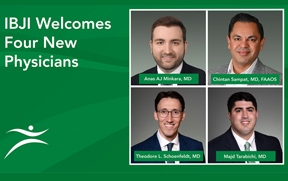A Cervical Fusion Surgery links together damaged segments of the vertebral column in the neck. Normally, there is a spinal disc between each vertebrae, which acts as a cushion, but also allows some movement between each vertebrae. Most often a cervical fusion is performed because the spinal disc is causing problems by pushing on a nerve (called a disc herniation). This nerve pressure can cause irritation leading to symptoms of pain, tingling, and numbness in the neck and arms.
Many neck problems are due to degenerative changes that occur in the discs of the cervical spine and the joints between each vertebra. Other problems are the result of injury to parts of the spine or complications of earlier surgeries. If conservative treatments fail to control the pain due to neck problem, then your surgeon may suggest a cervical fusion. During surgery, the disc(s) between one or more vertebrae are removed, and bone growth is stimulated to link together adjacent vertebrae. Often, a metal device is used to stabilize the fusion until the bone growth is solid.
A cervical fusion is used
- To stop the motion between two or more vertebrae
- To stop the excess motion between the vertebrae and reduce your pain.
- To stabilize unstable fractures of the cervical spine
- To straighten or realign the cervical spine
By surgically stabilizing the problem area in the neck, the spinal cord is protected as the neck heals. Even when the spinal cord has been damaged and the patient is paralyzed, a spinal fusion allows the patient to begin rehabilitation earlier.
A cervical fusion may also be suggested to straighten the spine or to control a deformity of the cervical spine such as a cervical kyphosis. This is a condition where the natural inward curve of the neck reverses. This deformity occurs when the cervical spine is unstable and begins to bend forward.
Types of Cervical Fusion
The type of fusion approach you will have is dependent on your symptoms and specific diagnosis. Talk with your doctor about the exact approach of your cervical fusion surgery.
There are two types of cervical fusion procedures
- Anterior fusion – performed through the front of your neck
- Posterior fusion – performed through an incision in the back of your neck
Fusion with Instrumentation
Depending on the individual patient, a spine surgeon can choose to also have metal rods, screws or hooks used in combination with the bone graft to further stabilize the cervical spine.
A bone graft is used to connect the problem vertebrae. During the healing process, the vertebrae grow together, creating a solid piece of bone. This halts motion between the problem vertebrae, creating stability in the neck.
Bone Grafts
- Autograft – small piece of bone taken from your own body, usually your pelvis or hip
- Allograft – small piece of bone taken from a bone bank. This is bone that is taken from organ donors and stored under sterile conditions until needed for operations such as spinal fusion. The bone goes through a rigorous testing procedure, similar to a blood transfusion, before being used for fusion surgery.
Cervical Spine Surgery Procedure
Patients are given general anesthesia to put them to sleep. A breathing tube may also be inserted to assist your lungs throughout the procedure
Patients are placed on a special operating room bed that allows room for surgeons to work and for optimal access to the neck
A short incision in your neck exposes the correct area of the spine. An X-ray is used in the operating room to ensure that the correct bone/disc(s) is operated upon.
Your surgeon may use small cutting instruments to carefully remove soft tissue near the spinal nerves. The surgeon removes all or part of the lamina bone, takes out any disc fragments and eliminates any nearby bone spurs.
Next, your surgeon will remove the affected disc, which is the cushion between your vertebrae, as well as any arthritic areas. A bone graft is then placed between the vertebrae where the disc was originally. Eventually, this graft will fuse to the surrounding vertebrae to prevent abnormal motion of the area of the neck
At this time, your spine surgeon may choose to fix the bones in place with a single choice or combination of metal screws, rods and plates. The less motion there is between the healing bones, the higher the chance of successful fusion.
An anterior fusion may also be done in a way that spreads the vertebrae apart trying to restore the height between them.
Once this is complete, the muscles and soft tissue is put back into place and the skin is closed with sutures, staples, skin glue or Steri-Strips, which are small pieces of tape.
Cervical Spine Surgery Recovery
The surgery is considered a success when the symptoms are improved, and the bone has healed across the fused vertebrae. This fusion process usually takes 2 to 3 months. The activity allowed during that time will depend on the strength of the fusion. In some patients with solid bone and strong metal fixation more activity may be allowed. On the other hand, individuals who have concerns about their ability to fuse the vertebrae, the recovery may be more cautious.
Complications
Any surgical procedure may have complications. Because the surgeon is operating around the spinal cord, neck operations are always considered extremely delicate and potentially dangerous. The potential major complications of a cervical fusion may be
- A lack of adequate bone growth between the adjacent vertebrae, called an incomplete fusion.
- Nerve injury
- Difficulty swallowing
- Infection and bleeding
- Injury to the Spinal Cord
Rehabilitation
A minimum of three months is needed for the bones to fuse together and become solid. Yet the bone graft will continue to mature for one to two years. Your doctor may have you wear a rigid neck brace or halo vest for up to three months after surgery to keep your spine still and make sure the bones fuse. You may not require a rigid brace after a simple fusion using instrumentation.
Avoid activities that put strain on the healing fusion, such as forceful bending or twisting movements of the neck. Delay activities that require heavy or forceful use of your arms, such as lifting, until your doctor determines these activities are safe.
Physical Therapy
Your doctor may have you attend physical therapy beginning a minimum of five weeks after surgery. The goals of a well-rounded rehabilitation program are to
- Assist you in calming pain and inflammation
- Improve your mobility and strength
- Help you learn ways to manage your condition and control symptoms
- Teach you correct posture and body movements to protect the fusion
If you are suffering from spinal disc pain or have been told you might need spinal surgery, schedule online today with one our incredible spine surgeons at IBJI. It is your best choice for spine care in Illinois and has some of the best orthopedic physicians in the country.




